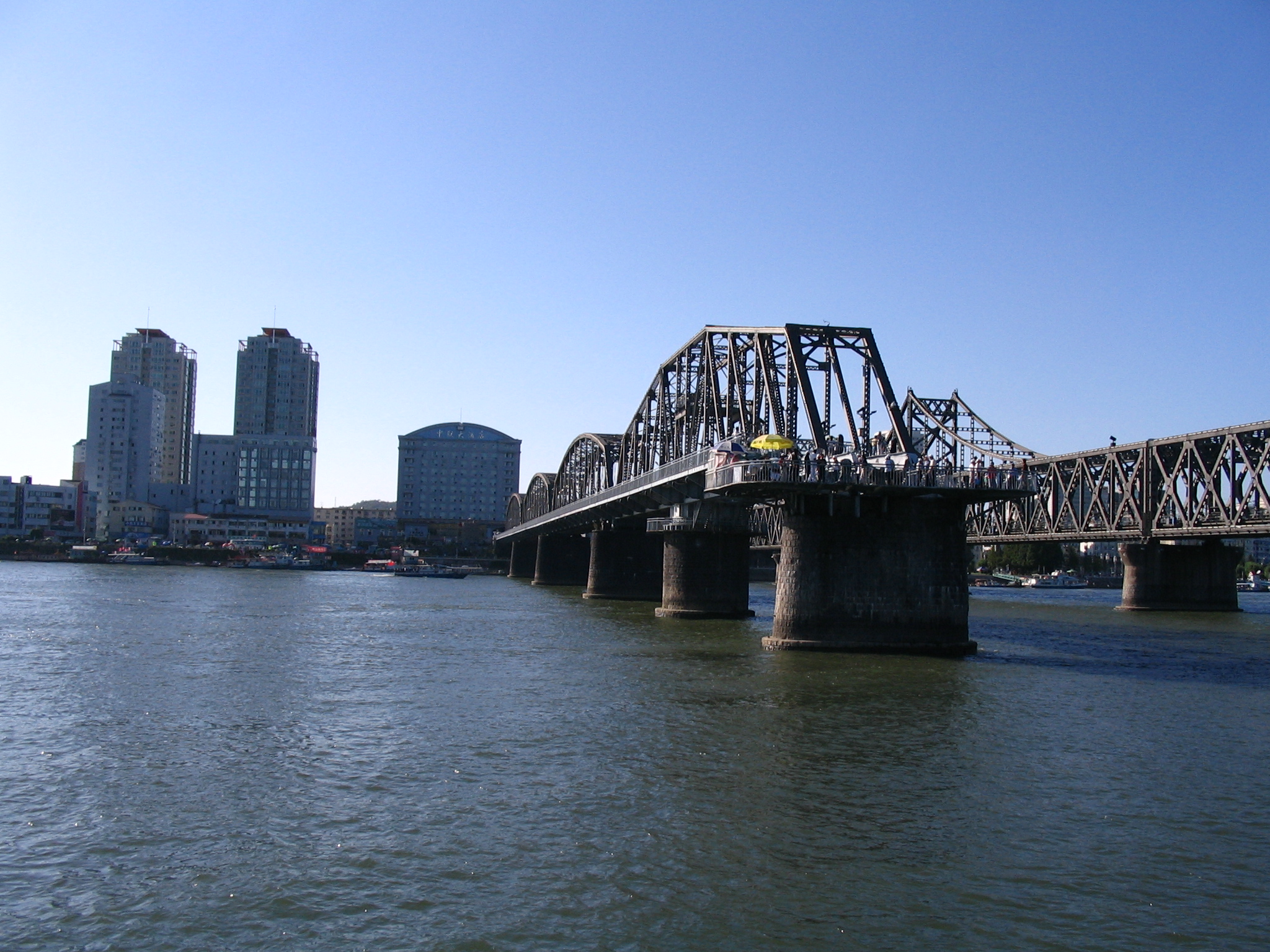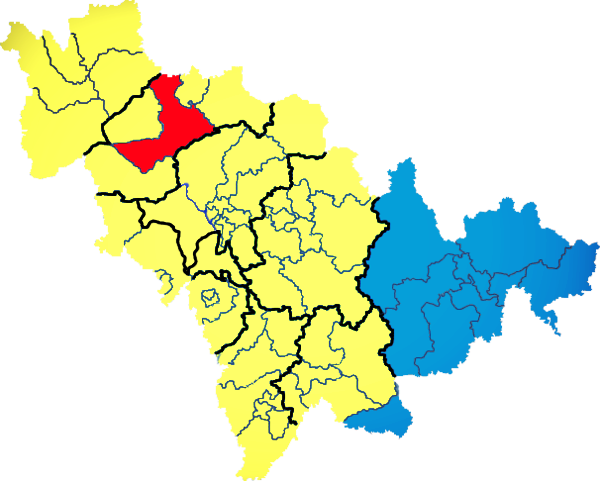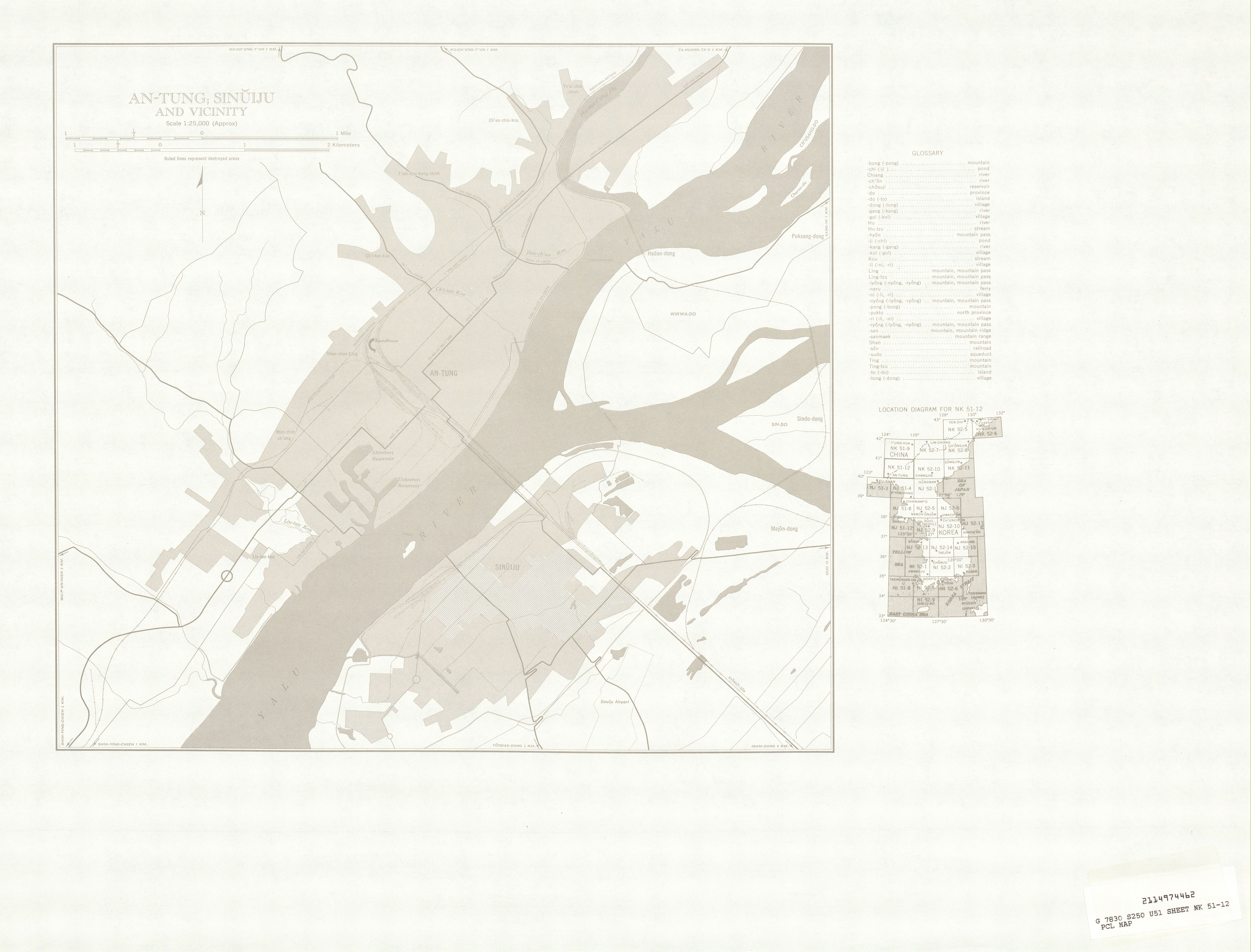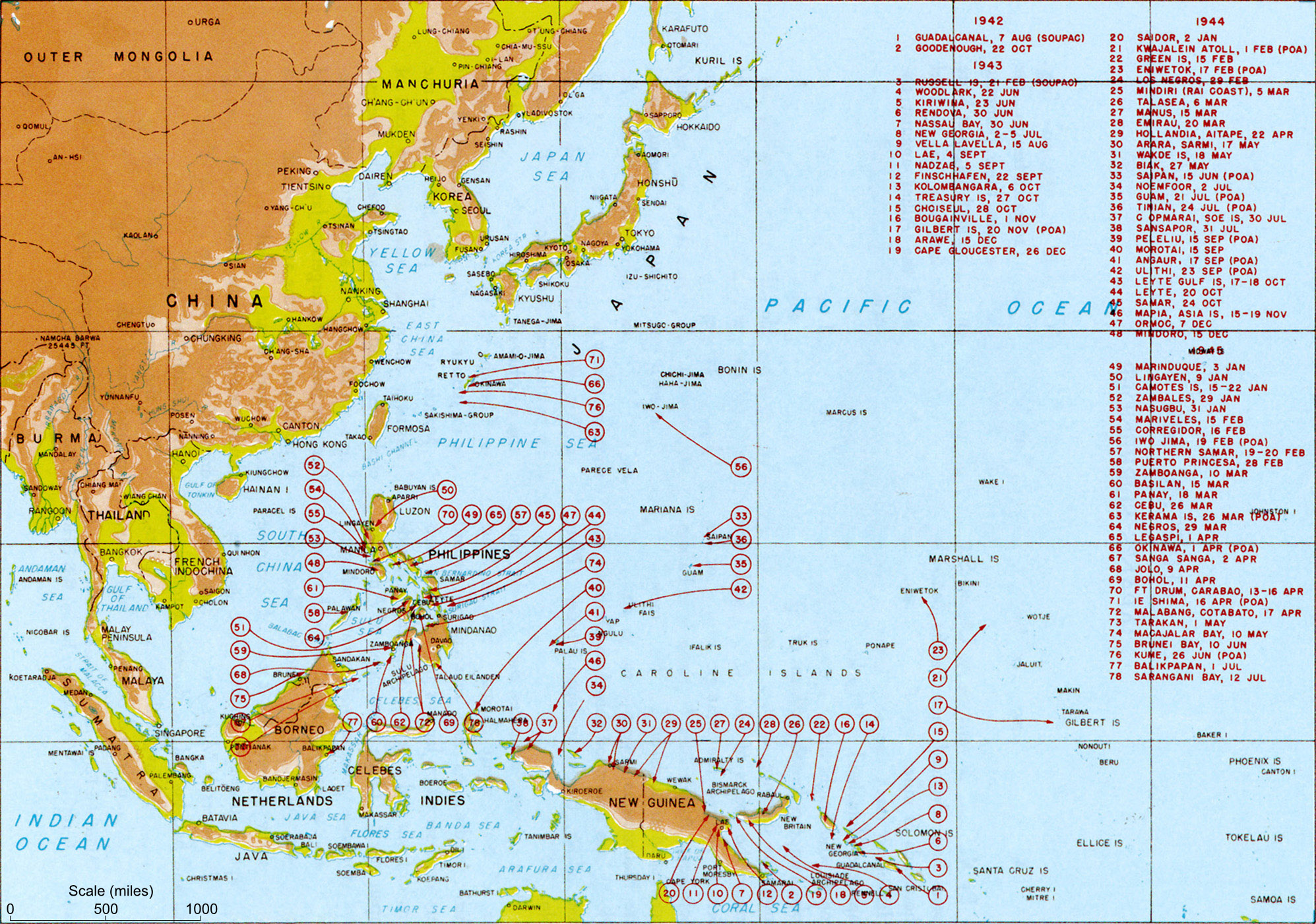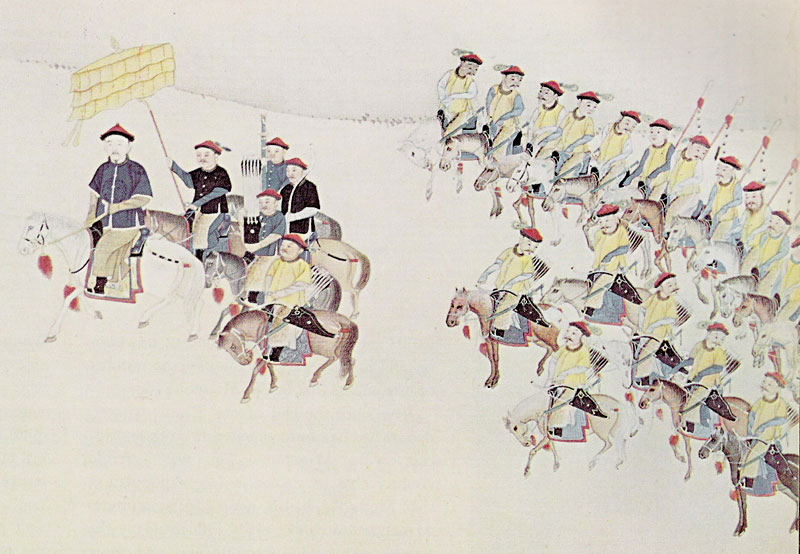|
China–North Korea Border
The China–North Korea border is an Border, international border separating China and North Korea, extending from Korea Bay in the west to a China–North Korea–Russia tripoint, tripoint with Russia in the east. The total length of the border is 1,352 kilometers (840 mi). The current border was created by Sino–North Korean Border Treaty, two secret treaties signed between China and North Korea in 1962 and 1964. Geography From west to east, the two countries are divided by three significant geographical features: the Yalu River, Paektu Mountain, and the Tumen River. Dandong, in the Liaoning Province of China, on the Yalu River delta, is the largest city on the border. On the other side of the river is the city of Sinuiju in North Pyongan Province, North Korea. The two cities are situated on the Yalu river delta at the western end of the border, near the Yellow Sea. Their waterfronts face each other and are connected by the Sino-Korean Friendship Bridge. There ar ... [...More Info...] [...Related Items...] OR: [Wikipedia] [Google] [Baidu] |
Jilin
) , image_skyline = Changbaishan Tianchi from western rim.jpg , image_alt = , image_caption = View of Heaven Lake , image_map = Jilin in China (+all claims hatched).svg , mapsize = 275px , map_alt = Map showing the location of Jilin Province , map_caption = Map showing the location of Jilin Province , coordinates = , subdivision_type = Country , subdivision_name = China , named_for = from ''girin ula'', a Manchu language, Manchu phrase meaning "along the river" , seat_type = Capital , seat = , seat1_type = , seat1 = , parts_type = Divisions , parts_style = para , p1 = 9 Prefectures of China, prefectures , p2 = 60 Counties of China, counties , p3 = 1006 Townships of China, townships , government_type = Provinces of China, Province , governing_body = Jilin Provinci ... [...More Info...] [...Related Items...] OR: [Wikipedia] [Google] [Baidu] |
Sinuiju
Sinŭiju (; ) is a city in North Korea which faces Dandong, Liaoning, China, across the international border of the Yalu River. It is the capital of North Pyongan Province, North P'yŏngan province. Part of the city is included in the Sinuiju Special Administrative Region, Sinŭiju Special Administrative Region, which was established in 2002 to experiment with introducing a market economy. In recent years, the city, despite lagging behind the development in the capital Pyongyang, has seen a small construction boom and increasing tourism from China. Geography Sinŭiju is bordered by the Amnok River, and by Pihyon County, P'ihyŏn and Ryongchon County, Ryongch'ŏn counties. The city's altitude is 1 metre (4 feet) above sea level. There are several islands at the mouth of the Amnok River - Wihwado Island, Wihwa-do, Imdo Island, Rim-do, Ryuchodo Island, Ryuch'o-do and East Ryuchodo Island, Tongryuch'o-do. Administrative divisions Sinuiju city is the heart of the Sinuiju Special Ad ... [...More Info...] [...Related Items...] OR: [Wikipedia] [Google] [Baidu] |
Surrender Of Japan
The surrender of the Empire of Japan in World War II was Hirohito surrender broadcast, announced by Emperor Hirohito on 15 August and formally Japanese Instrument of Surrender, signed on 2 September 1945, End of World War II in Asia, ending the war. By the end of July 1945, the Imperial Japanese Navy (IJN) was incapable of conducting major operations and an Operation Downfall, Allied invasion of Japan was imminent. Together with the United Kingdom and Republic of China (1912–49), China, the United States called for the unconditional surrender of Japan in the Potsdam Declaration on 26 July 1945—the alternative being "prompt and utter destruction". While publicly stating their intent to fight on to the bitter end, Japan's leaders (the Supreme War Council (Japan), Supreme Council for the Direction of the War, also known as the "Big Six") were privately making entreaties to the publicly neutral Soviet Union to mediate peace on terms more favorable to the Japanese. While mainta ... [...More Info...] [...Related Items...] OR: [Wikipedia] [Google] [Baidu] |
Japan–Korea Treaty Of 1910
The Japan–Korea Treaty of 1910, also known as the Japan–Korea Annexation Treaty, was made by representatives of the Empire of Japan and the Korean Empire on 22 August 1910. In this treaty, Japan formally annexed Korea following the Japan–Korea Treaty of 1905 (by which Korea became a protectorate of Japan) and the Japan–Korea Treaty of 1907 (by which Korea was deprived of the administration of internal affairs). Japanese commentators predicted that Koreans would easily assimilate into the Japanese Empire. In 1965, the Treaty of Basic Relations between South Korea and Japan confirmed this treaty is "already null and void". History The treaty was proclaimed to the public (and became effective) on 29 August 1910, officially starting the period of Japanese rule in Korea. The treaty had eight articles, the first being: "His Majesty the Emperor of Korea makes the complete and permanent cession to His Majesty the Emperor of Japan of all rights of sovereignty over th ... [...More Info...] [...Related Items...] OR: [Wikipedia] [Google] [Baidu] |
Gando Convention
The 1909 Gando Convention () was a treaty signed between Imperial Japan and Qing China in which Japan recognized China's claims to Jiandao, called Gando in Korean, and Mount Paektu, and in return Japan received railroad concessions in Northeast China ("Manchuria"). After the Surrender of Japan, Gando Convention was de jure nullified. While China (then still divided between the Nationalist and Communist factions) took control of Manchuria and the northwestern half of Mt. Paektu, the Korean government north of the 38th Parallel (the present-day government of the DPRK or North Korea) took control of the southeastern half of Mt. Paektu in addition to taking control of the Korean Peninsula north of the 38th Parallel. Gando/Jiandao is a historical border region along the north bank of the Tumen River in Jilin Province, Northeast China that has a high population of ethnic Koreans. Many Koreans maintain a claim on Gando for they regard the Gando Convention treaty null and void, and beca ... [...More Info...] [...Related Items...] OR: [Wikipedia] [Google] [Baidu] |
Korea Under Japanese Rule
From 1910 to 1945, Korea was ruled by the Empire of Japan under the name Chōsen (), the Japanese reading of "Joseon". Japan first took Korea into its sphere of influence during the late 1800s. Both Korea (Joseon) and Japan had been under policies of isolationism, with Joseon being a Tributary system of China, tributary state of Qing China. However, in 1854, Perry Expedition, Japan was forcibly opened by the United States. It then rapidly modernized under the Meiji Restoration, while Joseon continued to resist foreign attempts to open it up. Japan eventually succeeded in opening Joseon with the unequal Japan–Korea Treaty of 1876. Afterwards, Japan embarked on a decades-long process of defeating its local rivals, securing alliances with Western powers, and asserting its influence in Korea. Japan Assassination of Empress Myeongseong, assassinated the defiant Korean queen and intervened in the Donghak Peasant Revolution.Donald Keene, ''Emperor of Japan: Meiji and his World, 1852� ... [...More Info...] [...Related Items...] OR: [Wikipedia] [Google] [Baidu] |
Empire Of Japan
The Empire of Japan, also known as the Japanese Empire or Imperial Japan, was the Japanese nation state that existed from the Meiji Restoration on January 3, 1868, until the Constitution of Japan took effect on May 3, 1947. From Japan–Korea Treaty of 1910, 1910 to Japanese Instrument of Surrender, 1945, it included the Japanese archipelago, the Kuril Islands, Kurils, Karafuto Prefecture, Karafuto, Korea under Japanese rule, Korea, and Taiwan under Japanese rule, Taiwan. The South Seas Mandate and Foreign concessions in China#List of concessions, concessions such as the Kwantung Leased Territory were ''de jure'' not internal parts of the empire but dependent territories. In the closing stages of World War II, with Japan defeated alongside the rest of the Axis powers, the Japanese Instrument of Surrender, formalized surrender was issued on September 2, 1945, in compliance with the Potsdam Declaration of the Allies of World War II, Allies, and the empire's territory subsequent ... [...More Info...] [...Related Items...] OR: [Wikipedia] [Google] [Baidu] |
Jiandao
Jiandao or Chientao, known in Korean as Gando or Kando, is a historical border region along the north bank of the Tumen River in Jilin, Jilin Province, Northeast China that has a high population of ethnic Koreans. The word "Jiandao", literally "Middle Island", originally referred to a shoal in Tumen River between today's Chuankou Village, Kaishantun in Longjing, Jilin, Longjing, Jilin, China and Chongsŏng, Onsong County in North Korea. The island was an important landmark for immigrants from the Korea, Korean Peninsula looking for settlements across the river. As the number of immigrants increased, the area covered by the name "Jiandao" gradually changed to reflect the areas of Korean settlement. In the early 20th century, an expanding Empire of Japan, Japanese Empire argued that Koreans in China, ethnic Koreans living in this area should be placed under its jurisdiction. As one of its first set of attempts to annex northeast China and conquer other parts of mainland China, I ... [...More Info...] [...Related Items...] OR: [Wikipedia] [Google] [Baidu] |
Sukjong Of Joseon
Sukjong (; 7 October 1661 – 12 July 1720), personal name Yi Sun (), was the 19th monarch of the Joseon dynasty of Korea. A skilled legislator, he caused multiple changes in political power throughout his reign, by switching among the Namin (Southerners), Seoin (Westerners), Soron and Noron political factions. Biography King Sukjong was born on October 7, 1661, to King Hyeonjong and Queen Myeongseong at Gyeonghuigung. His given name was Yi Sun. He became the Crown Prince Myeongbo in 1667 at age 6, and in 1674, at age 13, he became the 19th ruler of the Joseon Dynasty. King Sukjong was a brilliant politician, but his reign was marked by some of the most intense factional fights in the Joseon dynasty. Sukjong frequently replaced faction in power with another one to strengthen the royal authority. With each change of government, which was called ''hwanguk'' (), literally ''change/switching of the state'', the losing faction was completely driven out of politics with exec ... [...More Info...] [...Related Items...] OR: [Wikipedia] [Google] [Baidu] |
Kangxi Emperor
The Kangxi Emperor (4 May 165420 December 1722), also known by his temple name Emperor Shengzu of Qing, personal name Xuanye, was the third emperor of the Qing dynasty, and the second Qing emperor to rule over China proper. His reign of 61 years makes him the longest-reigning emperor in Chinese history and one of the longest-reigning rulers in history. He is considered one of China's greatest emperors. The third son of the Shunzhi Emperor, Kangxi was enthroned at the age of seven while actual power was held for six more years by the four regents nominated by his father. After assuming personal rule, Kangxi's attempt to revoke the fiefdoms of feudal princes sparked the Revolt of the Three Feudatories, which he suppressed. He also forced the Kingdom of Tungning in Taiwan and Mongols in the north and northwest to submit to Qing rule, and launched an expedition that incorporated Tibet into the empire. Domestically, he initially welcomed the Jesuits and the propagation of ... [...More Info...] [...Related Items...] OR: [Wikipedia] [Google] [Baidu] |
Joseon Dynasty
Joseon ( ; ; also romanized as ''Chosun''), officially Great Joseon (), was a dynastic kingdom of Korea that existed for 505 years. It was founded by Taejo of Joseon in July 1392 and replaced by the Korean Empire in October 1897. The kingdom was founded following the aftermath of the overthrow of Goryeo in what is today the city of Kaesong. Early on, Korea was retitled and the capital was relocated to modern-day Seoul. The kingdom's northernmost borders were expanded to the natural boundaries at the rivers of Yalu River, Amnok and Tumen River, Tuman through the subjugation of the Jurchen people, Jurchens. During its 500-year duration, Joseon encouraged the entrenchment of Korean Confucianism, Confucian ideals and doctrines in Korean society. Neo-Confucianism was installed as the new state's ideology. Korean Buddhism, Buddhism was accordingly discouraged, and occasionally Buddhists faced persecution. Joseon consolidated its effective rule over the Korean peninsula and saw the he ... [...More Info...] [...Related Items...] OR: [Wikipedia] [Google] [Baidu] |
Hwanggumpyong Island
Hwanggumpyong (, zh, s=黄金坪, t=黃金坪, p=Huángjīnpíng), formerly called Hwanggumpyong Island (, zh, s=黄金坪岛, t=黃金坪島, p=Huángjīnpíng Dǎo), is a North Korean free-trade zone bordering China. The area used to be a tidal island in the Yalu River. However, due to continuous deposition of river-borne sediments, the northern portion of the former island is now permanently connected with the Chinese city of Dandong. A steel mesh fence has been built to mark the land border between North Korea and China. Due to ethnic Koreans living on the island at the time of a 1962 border treaty, both China and North Korea agreed that the sovereignty of the island belongs to North Korea. The former river island is now a North Korean exclave on the otherwise Chinese side of the river. The agreement is not recognized by South Korea, who continues to claim this island in accordance with its constitution. History In June 2011, an agreement, negotiated by Gao Jingde, of Sun ... [...More Info...] [...Related Items...] OR: [Wikipedia] [Google] [Baidu] |
